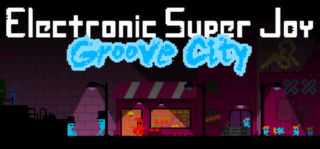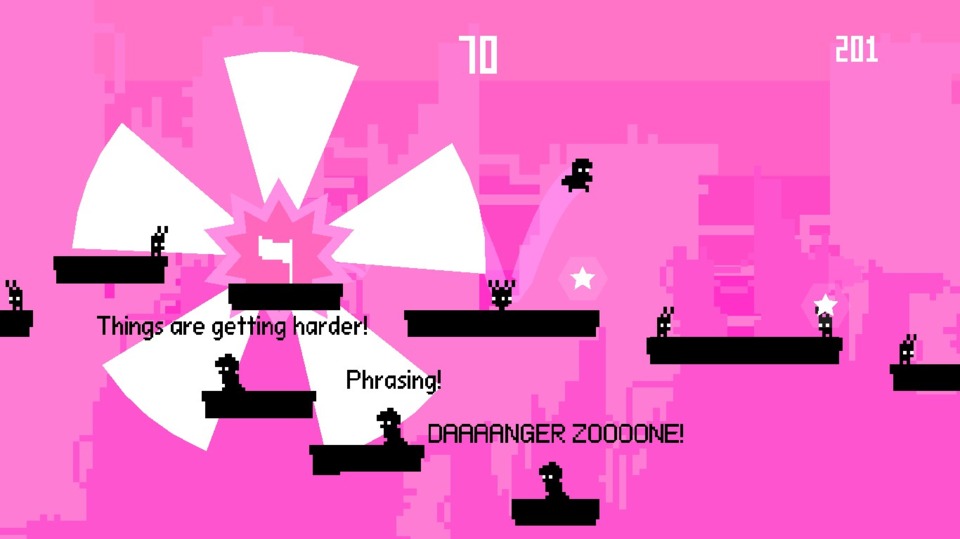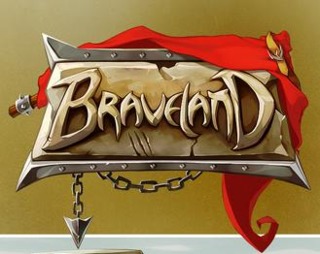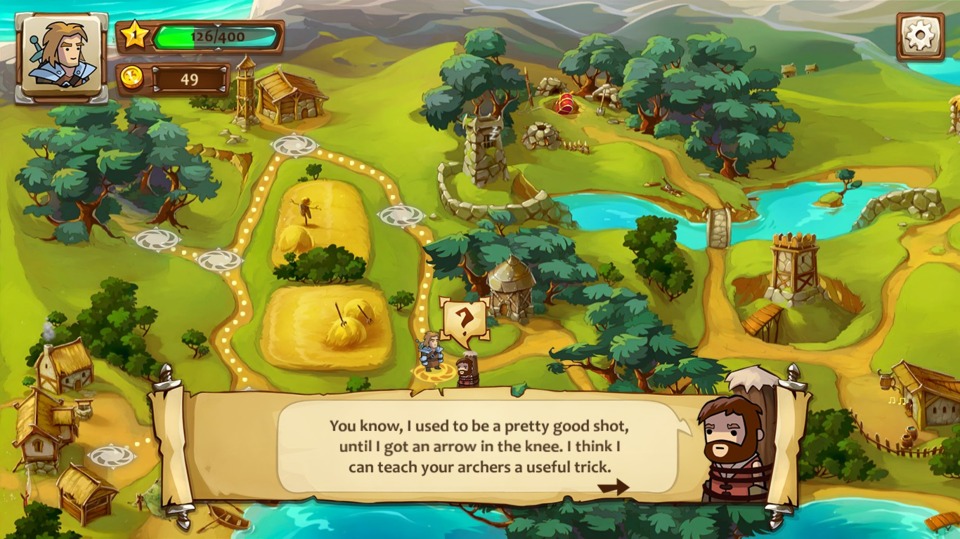Go! Go! GOTY! ~Day Seven~ (ESJ: Groove City + Braveland)
By Mento 1 Comments
Day Seven

- Game: Electronic Super Joy: Groove City
- Source: Bundle Stars's Firestorm Bundle
- Started: 07/12
- Ended: 07/12
Ah, good old ESJ. Though Electronic Super Joy released last year, the psychedelic masocore platformer from Michael Todd Games received a standalone add-on in 2014 that feels sort of like a Blood Dragon or a Peggle Nights: A comparatively bite-size morsel that riffs on its source material, but has its own original story and new ideas that might just make it to a fully-fledged sequel some day. Groove City isn't particularly big (it's the size of a regular chapter from ESJ), but it's more ESJ if you're missing the silly orgasmic checkpoints and the even sillier plots about robot strippers and buttless heroes.
It'd be easier to point to an earlier thing I wrote about the original game and then talk about what's new with this add-on. The game has new music, the original's thumping club mixes being one of the draws for Electronic Super Joy (well, if you're into that sort of thing), and the game also adds in collectibles in the shape of white stars. Collectibles do nothing but add towards the player's score, naturally enough, and it does the risk/reward thing by adding black stars which are worth considerably more but create homing missiles that plague you until you complete the stage (or die). There are rainbow stars too, which replace the well-hidden trinkets from the original that occasionally require you check for false walls and leaps of faith. Usual stuff.

The game's also considerably easier than the final chapters of the original ESJ, which seems like an odd choice if you're shipping a game like this for the diehards who have conquered ESJ's myriad challenges and are thirsting for more. There's a few tricky sequences, but nothing I couldn't jump my way past in less than a handful of minutes. I think I hit a record 60 deaths on one stage, which isn't actually as bad as it sounds. Death is not a hunter unbeknownst to its prey, especially in this series. There are a couple of post-game stages that are a bit more devious, but again are fairly short. You'll be done with everything the game has to offer in a couple of hours, if that.
But hey, that simply means the game works as an introduction to the original ESJ rather than a post-game expansion. Play the series backwards if you like, and I don't imagine Groove City will be heinously priced in any upcoming sales. It's an intense and goofy platformer that you'll be screaming at, but in a good way. But not in as good a way as those people announcing the checkpoints. I'll have what they're having?

- Game: Braveland
- Source: Groupees's Be Mine 15 Bundle
- Started: 07/12
Since Groove City was over with so quickly, I put a few hours into this next game as well. Tortuga Team's Braveland is your archetypal iOS port. It's not terrible, not at all in fact, but there's a certain blocky cartoonishness to anything devised for the mobile market that it's instantly recognizable. A strategy RPG, Braveland feels very much like a Heroes of Might and Magic game without all the city-sim stuff. There's a map with branching paths, and each either leads to a fight or to a means to supplement the player's army via recruiting new soldiers or buying new equipment which offers passive buffs to every unit.
I said it was Heroes of Might and Magic specifically, because this game employs what I pejoratively call the "Mad Stackz" means of visual presentation of armies. Which is to say, every unit of the same type kind of sits on each other's shoulders to create a single stack with a number to designate how many of that unit is actually there. So a farmer with a "7" means there's actually seven of that unit, not just one. In larger numbers, units do more damage, but that damage output goes down as the stack takes hits from enemies and the number of units in the stack dwindles. Beyond a certain threshold, a unit becomes useless as they simply won't have enough damage output to contribute to the battle meaningfully (and as every unit in the game will counter the first attack they receive that round, it way well be suicide to keep using them). If you aren't familiar with HoMM or the games it inspired, the Mad Stackz conceit is a little hard to wrap one's head around conceptually at first. It all adds to the strategy, albeit in an abstruse manner.

Beyond that, the game's fairly simple and straightforward, and thus precisely what you'd expect from an iOS game. It proceeds at a brisk pace, always giving you new challenges on the horizon and decisions to make regarding whether you ought to get more units or power up the units you already have, and I can tell I'll need to make a choice soon about which units I want to bring into fights as it appears I'm edging closer to a specific limit. So far I have: farmers, which are weak but stack in great numbers and are cheap to replace; archers, for ranged support; pathfinders, who are fast and deadly rogue-types; healers, whose healing magic become more potent the more of them you hire; and footmen, who are burly dudes who hit hard and take a lot of punishment. The game appears to only allow five unit types, and also limits how many high-level units you bring with you. I can definitely appreciate how layered they made this game, while also ensuring that it's easy enough to grasp and to play.
But man, do I not care for Mad Stackz. I'll keep at it for the time being, as I can't imagine there's too much more, and then move onto something else if I find it gets a little too samey. See you tomorrow, Steam chums.
